When someone loses part of their hand, the first questions are usually about getting back function, comfort, and confidence. A prosthetic is not just a replacement for what’s missing—it’s a tool that can help restore independence. But with so many options out there, one of the biggest choices people face is whether to go for a passive or active partial hand prosthetic.
This decision shapes how you’ll use your hand every day, how much training you’ll need, and even how your life will feel in the months and years ahead. It’s not a small choice, and it’s one that works best when you understand the real differences—not just in technology, but in what they mean for your lifestyle.
In this guide, we’ll break down what passive and active partial hand prosthetics are, how they work, what they offer, and how to decide which one fits your needs best.
Understanding Partial Hand Prosthetics
What Makes a Partial Hand Prosthetic Different from Other Prosthetics
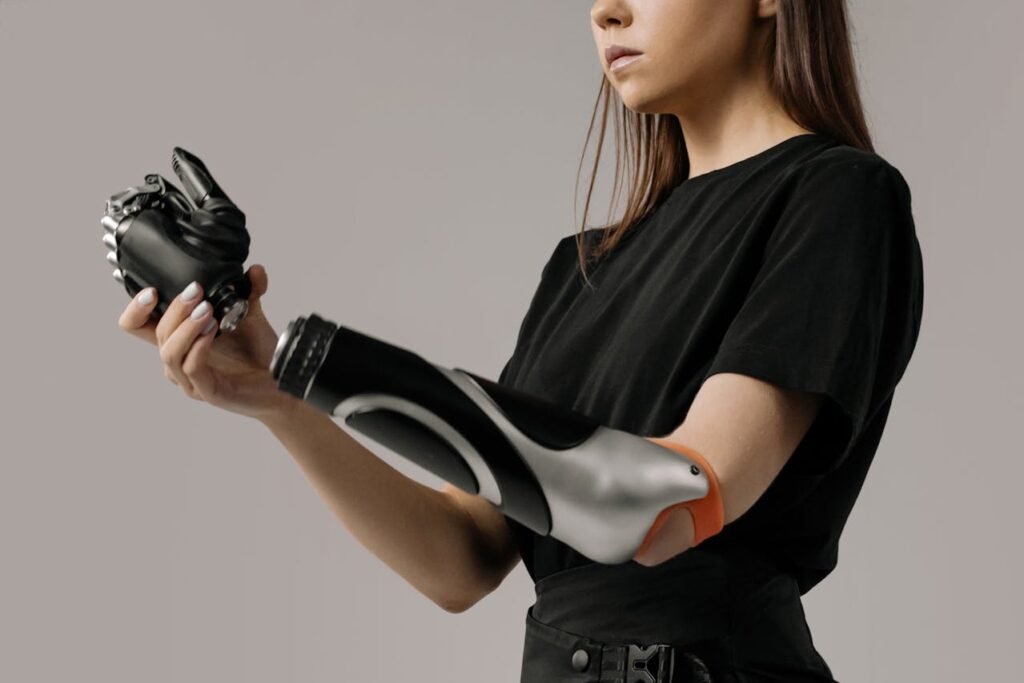
A partial hand prosthetic is designed for people who have lost part of their hand but still have some wrist or palm function. This is different from full-hand or below-elbow prosthetics, which replace a larger part of the limb.
Because you still have some natural movement, partial hand prosthetics focus on complementing what remains rather than replacing everything. This makes them more specialized—they must work seamlessly with your existing motion and strength.
Why This Choice Matters
Choosing between passive and active prosthetics is not just about appearance or price. It’s about how you want to use your hand every day. A prosthetic that looks realistic but doesn’t move might be perfect for one person, while another needs one that responds to muscle signals to grip tools or type on a keyboard.
The right choice will depend on your level of amputation, your daily activities, your job, and even your personality.
What is a Passive Partial Hand Prosthetic
The Core Idea
A passive prosthetic doesn’t actively move on its own. It’s designed to look natural and sometimes to provide basic support for holding or stabilizing objects. Think of it as a functional helper and an aesthetic solution, rather than a powered tool.
How Passive Prosthetics Work
Passive devices are shaped to match your missing fingers or hand section. They are usually made from silicone or lightweight plastics. They may be custom-colored to match your skin tone, making them blend in almost seamlessly.
They don’t have motors or sensors. Instead, they rely on you positioning them manually or using your remaining fingers and wrist to help with certain tasks.
Common Uses for Passive Prosthetics
Passive prosthetics are often chosen by people who value a natural appearance and don’t need high levels of mechanical function. They can be useful for:
- Improving symmetry of the hands for balance and comfort
- Protecting sensitive areas from bumps or pressure
- Holding lightweight items in place while the other hand does the work
For example, a tailor might use a passive prosthetic to hold fabric while cutting with their other hand, or a teacher might use it to steady books while arranging papers.
Benefits of Passive Prosthetics
One of the main strengths of passive prosthetics is simplicity. They are easy to wear, require little to no maintenance, and don’t rely on batteries or electronics. This makes them durable and cost-effective.
They are also lightweight, which means you can wear them comfortably for long hours without fatigue. For many users, this comfort and the restored appearance outweigh the need for active movement.
Limitations of Passive Prosthetics
The main drawback is the lack of active function. You can’t grip, pinch, or hold heavy objects without help from your other hand or body. For people whose work or hobbies require regular two-handed activity, this can be limiting.
Passive prosthetics also don’t improve speed or efficiency in tasks—they provide stability but not powered movement.
What is an Active Partial Hand Prosthetic
The Core Idea
An active prosthetic is built to move. It can either be body-powered, where your own movements control the prosthetic, or myoelectric, where sensors detect your muscle signals and turn them into motion.
This makes active prosthetics ideal for people who need to regain more complex functions—like gripping tools, typing, or handling multiple objects at once.
How Active Prosthetics Work
In body-powered designs, cables or mechanical linkages connect the prosthetic to parts of your arm or wrist. Moving your wrist or elbow triggers the prosthetic to open or close.f
In myoelectric designs, small sensors sit against your skin where muscles remain. When you try to move your missing fingers, the sensors pick up the electrical signals and tell the prosthetic to move accordingly.
The Grippy Bionic Hand from Robobionics is a good example of myoelectric function at the partial hand level. It even includes Sense of Touch™ feedback, which helps users control grip pressure.
Common Uses for Active Prosthetics
Active devices shine in situations where movement and dexterity are key. They are often chosen by:
- Professionals who work with tools or machinery
- Office workers who type or use digital devices all day
- Students who need to write, hold books, or carry items between classes
An active prosthetic can grip a pen, open a water bottle, hold a shopping bag, or even control a steering wheel.
Benefits of Active Prosthetics
Active devices bring back functional independence in a way that passive devices can’t. They allow two-handed activity, better control over objects, and more natural movement in daily life.
With training, many users can achieve fine motor skills like handling coins or using chopsticks. For people who want to return to sports, music, or manual work, this can be life-changing.
Limitations of Active Prosthetics
The main challenges are cost, maintenance, and the learning curve. Myoelectric devices especially require regular charging, occasional servicing, and practice to use effectively.
They are also heavier than passive options, and some users find them tiring to wear for long stretches—though lightweight designs like those from Robobionics are helping to address this.
Choosing Between Passive and Active Partial Hand Prosthetics
Start With Your Amputation Level
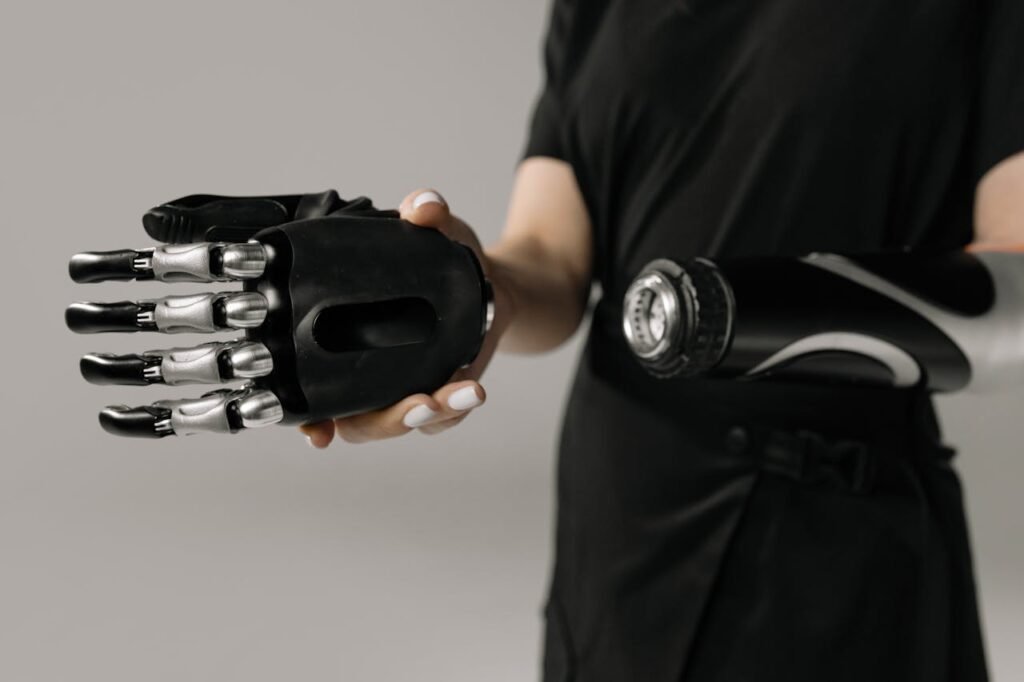
The amount of hand you still have plays a big role in deciding which type of prosthetic will work best. If you have good wrist movement and several functioning fingers, you might benefit more from a passive device for stability and appearance.
But if you’ve lost multiple fingers or have reduced grip strength, an active device can restore much more function. For example, someone with a proximal finger amputation may be able to power a body-driven active prosthetic, while someone with minimal joint movement may require a myoelectric one.
Understanding your residual function is the first step. A good prosthetist will test your range of motion, grip strength, and muscle signal quality before recommending an option.
Think About Your Daily Activities
Your day-to-day life will tell you a lot about what you really need. If most of your activities are light and don’t require much grip—like reading, writing, using a phone, or light cooking—a passive prosthetic might be enough.
On the other hand, if your day involves handling objects, lifting, or frequent two-handed work, you’ll want the movement and control that an active prosthetic offers. Imagine trying to carry a shopping basket with a passive device—it’s possible, but with an active one, it becomes much easier and safer.
Consider Your Work Requirements
Jobs often determine prosthetic needs more clearly than home activities. A mechanic, carpenter, or chef may not be able to work effectively with only a passive device. These professions often demand repetitive, controlled movement that active prosthetics handle well.
Meanwhile, someone in a customer-facing role who values appearance and light function—like a receptionist, teacher, or shopkeeper—might prefer the simplicity of a passive prosthetic.
At Robobionics, we’ve seen office workers thrive with myoelectric devices for typing and document handling, while farmers have benefitted from rugged, mechanical active hands that handle tools and outdoor conditions well.
Evaluate Your Physical Comfort
Wearing a prosthetic for hours requires a good fit, balanced weight, and skin-friendly materials. Passive devices are usually lighter and easier on the body, which can be helpful if you have sensitive skin or joint issues.
Active devices, while heavier, can be balanced with ergonomic designs and adjustable fittings. Comfort also depends on proper training—how you lift, hold, and carry with the device affects how natural it feels.
Look at Long-Term Maintenance
Passive prosthetics are low-maintenance. They don’t have moving parts that need servicing, and they don’t require charging. Active prosthetics, particularly myoelectric ones, will need occasional servicing, battery replacements, and firmware updates if they use smart control systems.
For people in areas without easy access to service centers, this can be a deciding factor. However, Robobionics addresses this with strong local support and remote troubleshooting options, so users in smaller towns can still manage advanced devices.
Budget and Funding
Cost is a practical but important factor. Passive devices are more affordable, and for some, that makes them the realistic choice. Active devices are more expensive due to the technology involved, but they also deliver higher functionality.
If budget is a barrier, explore funding options. NGOs, CSR initiatives, and government programs sometimes provide subsidies. Robobionics also works with partners to make active devices more accessible to those who need them most.
Combining Passive and Active Solutions
When You Might Use Both
Some people find that having both a passive and an active prosthetic suits their lifestyle best. The passive device can be used for long wear, social settings, or activities where appearance and comfort are the priority.
The active device can then be used for work, sports, or specific tasks that require extra grip and dexterity. Switching between the two gives flexibility and ensures you’re always using the most suitable tool for the job.
Example: A Teacher Who Paints
We once worked with a teacher who loved painting in her free time. She used a passive prosthetic during her school day for comfort and appearance, then switched to an active device at home to hold brushes and tools securely while she worked on her art.
This kind of dual approach can give you the best of both worlds without forcing you to compromise on comfort or function.
Training and Adapting to Your Prosthetic
Learning to Use a Passive Device
While passive devices don’t require complex movement control, you’ll still need to learn how to use them effectively. Positioning the hand, supporting objects, and adjusting to the balance all take practice.
Therapists can help you find creative ways to adapt tasks—such as using your prosthetic to stabilize items while your natural hand performs the main action.
Learning to Use an Active Device
Active prosthetics require a more structured learning process, especially for myoelectric systems. You’ll train your muscles to send clear signals, and you’ll practice controlling grip strength and timing.
In the early days, this can feel like learning a new language. But with consistent training—using tools like our Gamified Rehabilitation App—you can quickly progress to performing tasks naturally and without thinking about each movement.
Making it Part of Your Routine
Regardless of type, your prosthetic should become a regular part of your life. Wear it daily, even for short periods, so your brain and body integrate it into your natural movement patterns.
The more consistently you use it, the faster it becomes second nature—and the more independence you regain.
Real-Life Case Studies and Lessons Learned
Case Study 1: The Office Professional Who Needed Speed and Precision
Ravi, a 34-year-old data analyst, lost two fingers on his dominant hand in a road accident. His work involved constant typing, handling reports, and attending meetings where he needed to appear confident.
Initially, he considered a passive prosthetic for its lighter weight and natural look. But after a trial session, he found that an active myoelectric prosthetic gave him the ability to type faster and use a mouse without awkward positioning.
With training, Ravi reached almost 85% of his pre-injury typing speed. His case shows that while appearance matters, the real game-changer is matching the prosthetic’s abilities to your main work tasks.
Case Study 2: The Farmer Who Needed Strength and Durability
Suresh, a farmer from Maharashtra, lost part of his right hand while working with a harvesting machine. His main challenge wasn’t fine movement—it was grip strength and durability for outdoor work.
A mechanical active prosthetic proved ideal. It gave him the ability to hold farming tools securely and withstand dust, heat, and rain. His choice reminds us that in physically demanding environments, a rugged mechanical device can outperform more delicate options.
Case Study 3: The Artist Who Combined Passive and Active Devices
Ananya, a 28-year-old art teacher, lost her index and middle fingers in a cooking accident. She needed precision for painting but also valued comfort during long teaching hours.
She opted for two devices—a passive silicone prosthetic for everyday wear and an active device for painting and detailed work. This combination allowed her to maintain comfort without compromising on her art.
Her story highlights that sometimes the smartest solution is not one device, but a set of tools tailored to different activities.
Overcoming Common Challenges
The Initial Learning Curve
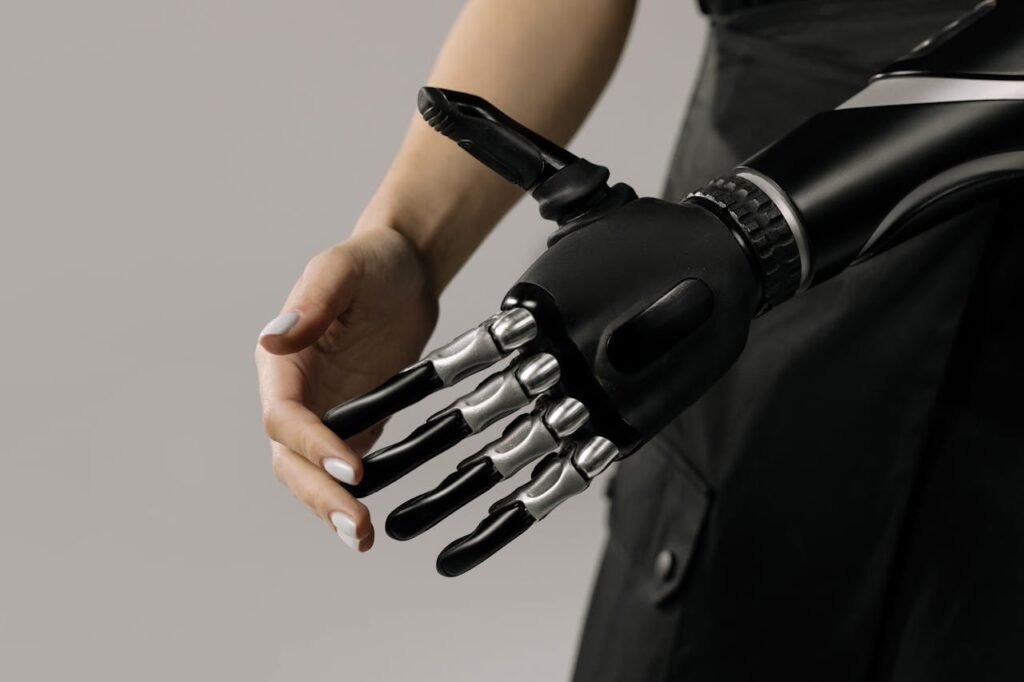
Whether you choose a passive or active prosthetic, the first weeks can feel frustrating. You may drop objects, struggle to perform familiar tasks, or feel slower than before.
The best way to overcome this is through structured practice. Start with small, low-risk activities like holding soft objects or stabilizing paper. Gradually move on to tasks that require more control or strength.
Consistent use builds muscle memory, and after a few weeks, the device will start feeling like an extension of your body rather than an attachment.
Managing Weight and Fatigue
Active prosthetics, especially myoelectric ones, can feel heavy after long use. If fatigue sets in, break tasks into shorter sessions and take regular rest breaks.
Wearing the device for shorter periods at the start of the day and gradually increasing duration also helps your muscles adapt to the weight.
For passive devices, fatigue is less of an issue, but skin comfort still matters. Adjusting straps or using breathable liners can prevent irritation.
Dealing With Maintenance and Repairs
A key part of long-term success is keeping your prosthetic in good working order. Passive devices mostly need cleaning and occasional adjustments. Active devices require battery care, software updates, and mechanical checks.
Set a routine—for example, cleaning the prosthetic every evening, charging it overnight, and scheduling a service every few months. Quick attention to small issues prevents bigger breakdowns later.
Emotional Recovery and Confidence Building
Accepting the Change
Finger or partial hand loss can feel like more than just a physical injury—it can be a deep personal loss. Many people go through stages of grief, from denial and anger to eventual acceptance.
Acknowledging these feelings is the first step toward emotional recovery. Some people find therapy helpful, while others lean on family, friends, or support groups.
Rebuilding Self-Image
A prosthetic can help restore not just function, but also the way you see yourself. Passive devices can make the hand look whole again, reducing self-consciousness in public. Active devices can boost confidence by letting you perform tasks independently.
Small wins—like cooking a meal, shaking hands, or completing a work task—add up to a stronger sense of capability. Celebrating these milestones is important for motivation.
Dealing With Social Reactions
People may stare or ask questions. This can be uncomfortable at first, but remember that most curiosity is harmless. Decide in advance how you want to respond. Some choose to give a short explanation, others simply smile and change the topic.
Over time, confidence in using your prosthetic will make these moments easier to handle.
Strategic Long-Term Advice for Prosthetic Users
Keep Training Beyond the First Few Months
Many people stop structured practice once they feel comfortable. But continued training—especially for active devices—keeps your skills sharp and allows you to learn new movements.
You can turn daily activities into practice sessions. For example, picking up coins, flipping playing cards, or folding laundry are all ways to improve dexterity without feeling like you’re “doing therapy.”
Review Your Needs Annually
Life changes, and so do your prosthetic needs. A device that worked perfectly last year might not be the best fit now if you’ve switched jobs, taken up new hobbies, or experienced changes in your residual limb.
Scheduling an annual review with your prosthetist ensures that adjustments or upgrades happen before you experience major discomfort or limitations.
Maintain a Backup Option
If you rely heavily on your prosthetic, having a backup device—even a simple passive one—ensures you’re never without basic function in case your main device needs repair.
This is especially important for people in active jobs or rural areas where repairs might take a few days.
Stay Connected to Your Provider
Regular follow-ups not only keep your device in good shape, but also keep you informed about new technology. Advances happen quickly in prosthetics, and staying connected means you can take advantage of better comfort, function, and design as soon as it’s available.
Business, Workplace, and Community Opportunities for Better Prosthetic Access
Why Businesses Should Pay Attention
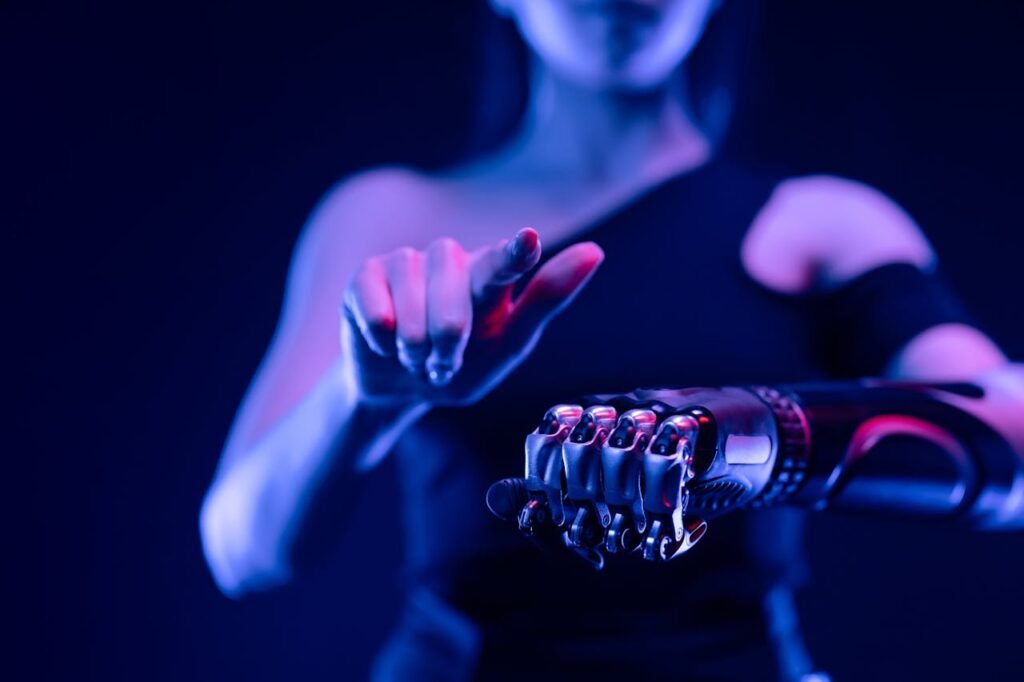
In industries like manufacturing, construction, agriculture, and logistics, hand injuries are unfortunately common. For an employer, that’s more than just a safety issue—it’s a productivity and retention challenge. Losing an experienced worker means losing valuable skills, and replacing them often costs far more than supporting them in recovery. Companies that step in to provide prosthetic solutions not only help the injured employee regain their livelihood but also send a strong message that they value people over positions.
Integrating Prosthetic Support Into Employee Benefits
Forward-thinking companies are starting to see prosthetic care as part of workplace health programs. Including prosthetic support in insurance plans, offering partial or full cost coverage, or partnering with a local provider for affordable solutions can make a huge difference. For example, an active device can help a machine operator return to their role faster, while a passive device can give an administrative worker the confidence to re-engage in daily tasks. This kind of support fosters loyalty and strengthens the employer brand.
Making the Workplace Prosthetic-Friendly
Even the most advanced device won’t perform well if the work environment creates unnecessary strain. Businesses can adapt tools, workstations, and workflows to better suit prosthetic users. For a factory worker with an active mechanical prosthetic, this could mean modifying tool grips. For an office worker, it might involve adjusting desk heights, mouse positions, or providing software that supports one-handed shortcuts. Training supervisors and colleagues on how to support a returning employee—without singling them out—can also make reintegration smoother.
The Role of CSR and Community Impact
Corporate Social Responsibility programs offer a powerful way to extend prosthetic access beyond employees. Sponsoring devices for accident victims in the community, funding rehab programs, or hosting awareness events can transform lives. These actions are visible, measurable, and deeply personal—they show that a business is invested in the human side of its community. A sponsored passive prosthetic might restore dignity for someone in a customer-facing job, while a funded active prosthetic could help a farmer continue working their fields.
Opportunities for NGOs and Social Groups
Non-governmental organizations that focus on rural health, disability inclusion, or vocational training are in a unique position to help. Many people in smaller towns and villages have no idea that affordable, functional prosthetics exist. NGOs can bridge that gap by organizing screening camps, providing funding support, and working with manufacturers like Robobionics to deliver devices that fit local needs. In these areas, a robust, easy-to-maintain mechanical prosthetic often makes the most sense.
Hospital and Rehab Center Partnerships
Hospitals are usually the first stop after an injury, but many patients are discharged without any clear plan for prosthetic fitting. Partnering with prosthetic providers ensures that patients leave with information, referrals, or even trial devices. Rehab centers can take it a step further by integrating prosthetic training into their therapy programs, so patients not only get a device but also learn how to use it effectively.
Government and Policy Support
Local and state governments can play an important role by offering subsidies, tax benefits, or inclusion of prosthetics in public health schemes. Active prosthetics in particular can be life-changing for working-age individuals, and government-backed funding can help make them affordable for more people. Awareness campaigns can also help destigmatize prosthetic use, making it easier for people to seek out these solutions.
How Robobionics is Shaping the Future of Passive and Active Partial Hand Prosthetics
Designed for Real Lives in India

One of the biggest challenges in prosthetic adoption in India is that many available products are imported and designed for different lifestyles, climates, and work patterns. At Robobionics, we create devices for real Indian conditions—from the heat and humidity of coastal regions to the rugged demands of rural farming. Our prosthetics are built to blend seamlessly into everyday life, whether you’re working in an office, running a shop, or laboring in the fields.
Local Manufacturing for Better Access and Service
With 60 out of 64 components made in India, we’re able to keep prices affordable while maintaining high quality. This local approach also means that if a device needs servicing or parts, it can be done quickly without long waits for overseas shipments. Whether you’re in a big city or a smaller town, you can count on us for reliable support and follow-up care.
Innovation That Serves the User
We innovate with purpose. Our active prosthetics, like the Grippy Bionic Hand, feature patent-pending Sense of Touch™ technology that helps users control their grip with greater accuracy. For those who prefer mechanical solutions, our Grippy Mech Hand and Grippy Mech Finger offer powerful function without relying on batteries, making them perfect for rural and industrial use. Each device is tested with real users before it’s released, ensuring it delivers both comfort and practical value.
Support Beyond the Device
Getting a prosthetic is only part of the journey. We provide training sessions to help users adapt quickly, follow-up checks to ensure the fit and function remain optimal, and tools like our Gamified Rehabilitation App to make skill-building more engaging. We also connect new users with experienced ones, creating a peer network that offers encouragement, tips, and a sense of belonging.
Partnerships That Multiply Impact
We actively collaborate with hospitals, rehab centers, NGOs, and CSR initiatives to reach more people. These partnerships help us identify those in need, provide affordable solutions, and make sure no one is left behind due to cost or location. Whether it’s a sponsored passive prosthetic for a shopkeeper or an active device for a factory worker, these collaborations change lives in tangible ways.
Final Thoughts: Finding the Right Path Forward
You Have a Choice
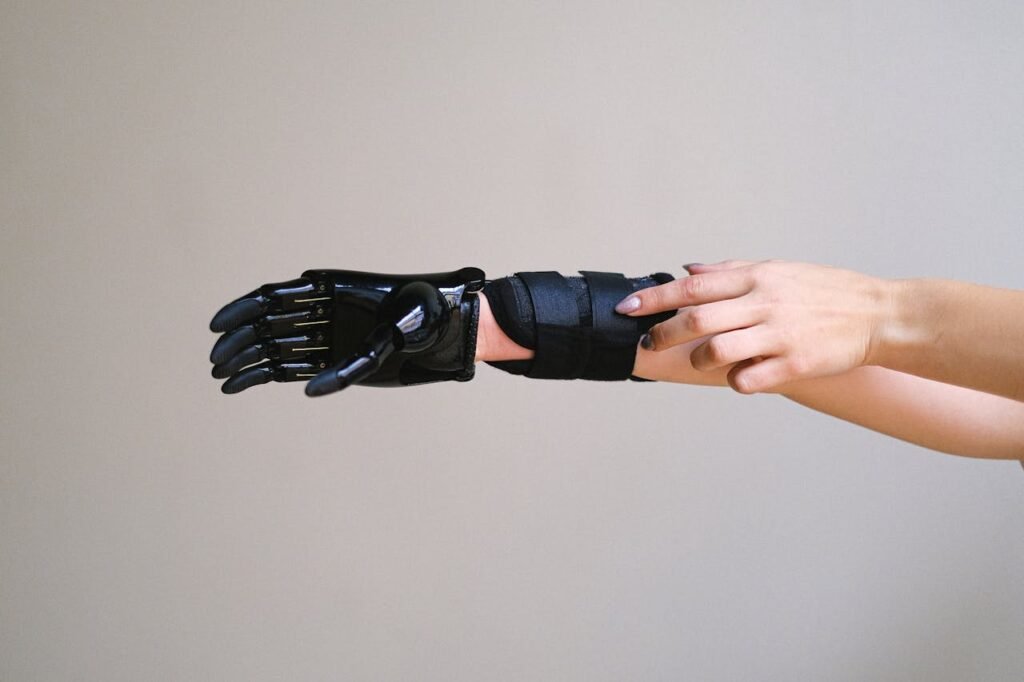
The decision between passive and active partial hand prosthetics is personal. It depends on your amputation level, your lifestyle, your work, and your goals. Both types have strengths, and in some cases, a combination may be the perfect fit. What matters most is that the device supports your independence and confidence.
Your Journey Is Unique
No two users are the same, and there’s no one-size-fits-all solution. Your prosthetic should feel like it belongs to you—not just physically, but as part of your identity. It should make daily tasks easier, but it should also help you feel whole again.
Robobionics Will Walk With You
From the moment you begin exploring your options to years after you’ve started using your prosthetic, Robobionics will be by your side. We’ll guide you through the decision, fit you with a device that truly works for you, and be there to support you whenever you need adjustments, upgrades, or advice.
If you or someone you know is navigating life after partial hand loss, we invite you to experience our solutions firsthand. Book a free demo with us at www.robobionics.in/bookdemo and see how the right prosthetic can change not just your hand, but your life.



